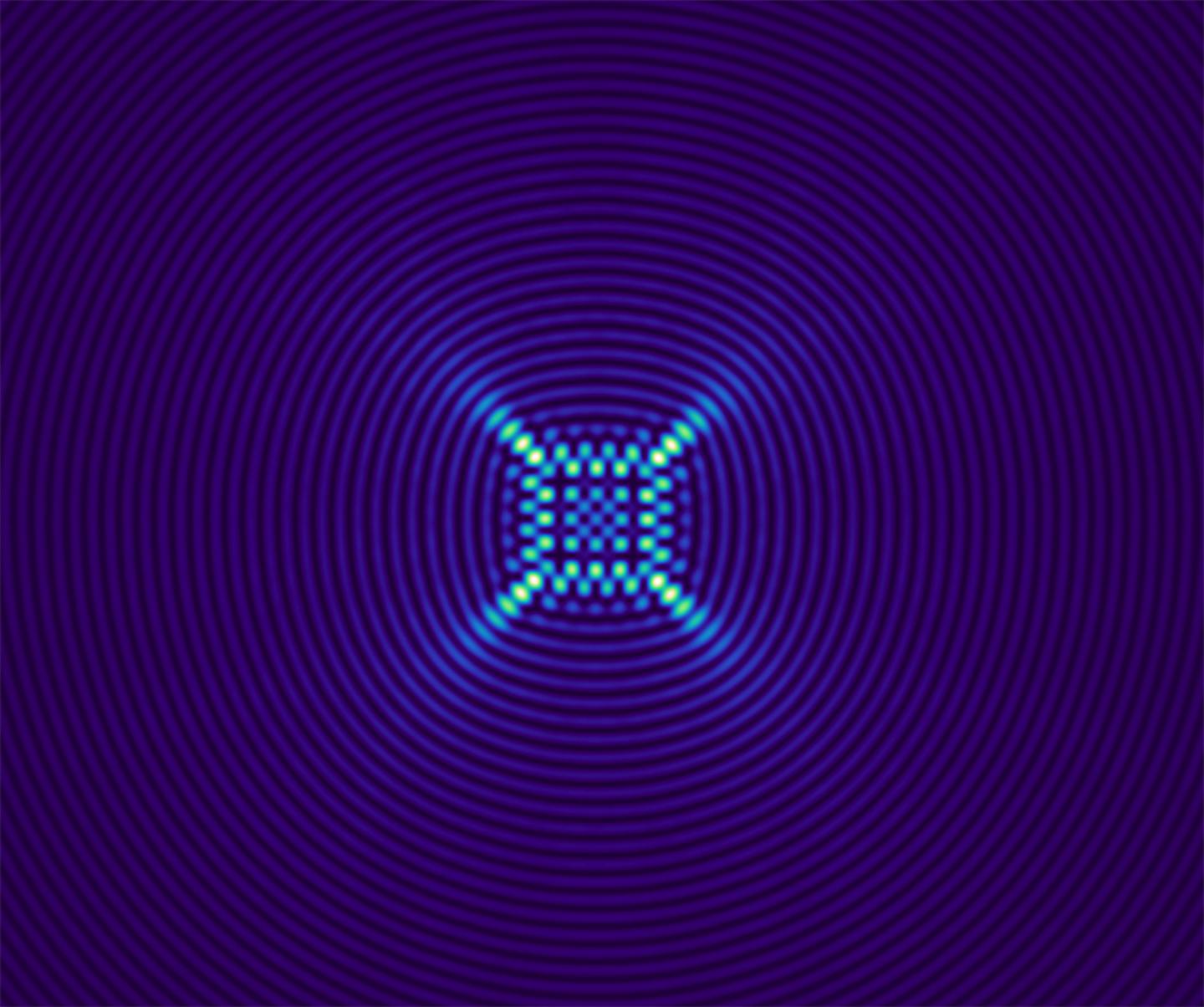Researchers develop for the first time light fields using caustics that do not change during propagation

Credit: WWU – Alessandro Zannotti
Modern applications as high resolution microsopy or micro- or nanoscale material processing require customized laser beams that do not change during propagation. This represents an immense challenge since light typically broadens during propagation, a phenomenon known as diffraction. So-called propagation-invariant or non-diffracting light fields therefore do not seem possible at first glance. If it were possible to produce them, they would enable new applications such as light disk microscopy or laser-based cutting, milling or drilling with high aspect ratios.
An international research team from the Universities of Birmingham (UK), Marseille (France) and Münster (Germany) has now succeeded for the first time to create arbitrary nondiffracting beams. “We implement an approach inspired by nature, in which any desired intensity structure can be specified by its boundaries,” explains one of the authors of the study, Prof. Cornelia Denz from the Institute of Applied Physics at the University of Münster. The authors cleverly exploit light structures that can be seen in rainbows or when light is transmitted through drinking glasses: spectacular ray structures named caustics. They are bright focus lines that overlap, and thereby building networks that can be exploited for nondiffracting propagation. The team developed a method to use these caustics as a basis for the generation of arbitrary structures, and has thus created an intelligent manipulation of ray propagation. In this way, countless new types of laser beams can be formed on the micrometer scale, opening up completely new perspectives in optical materials processing, multidimensional signal transmission or advanced high resolution imaging.
Only some years ago it was possible to realize a few light fields that exhibit these non-diffracting properties, even though the theoretical idea is older: Concentric ring structures like the Bessel beam could be produced in a propagation-invariant way. The theory predicts a whole class of beams whose transverse shape is generated on elliptical or parabolic trajectories and represent natural solutions of the wave equation. Although there has long been a need for such customized light beams with these properties, they have hardly been produced experimentally because the invariance of the transverse intensity structure must be maintained during propagation.
###
The study results of the team were recently published in the journal “Nature Communications“.
Original publication:
A. Zannotti, C. Denz, M. A. Alonso, M. R. Dennis (2020): Shaping caustics into propagation invariant light. Nature Communications; DOI: 10.1038/s41467-020-17439-3
Media Contact
Cornelia Denz
[email protected]
Original Source
https:/
Related Journal Article
http://dx.





